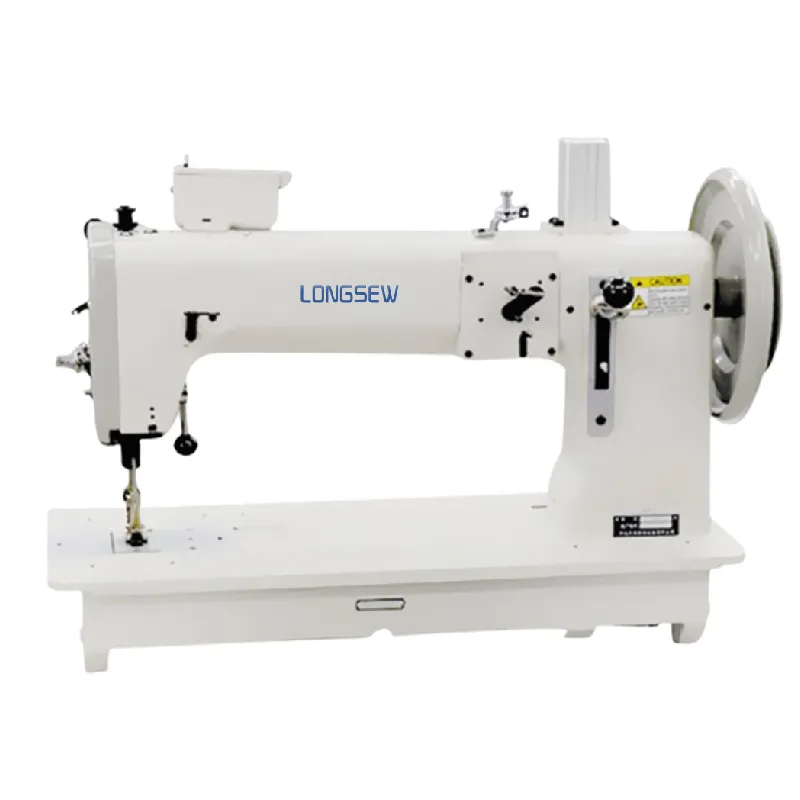twin needle coverstitch
Exploring the Twin Needle Coverstitch The Key to Professional-Looking Hemming
When it comes to sewing, especially for garment construction, achieving a neat and professional finish is essential. One of the best methods to accomplish this is through the use of a twin needle coverstitch. This technique is particularly popular among sewers who work with knit fabrics or stretchy materials, and it is a fundamental skill for both hobbyists and professionals alike.
What is a Twin Needle Coverstitch?
A twin needle coverstitch combines the functionalities of a regular sewing machine and a serger. It creates two parallel rows of stitching on the front side of the fabric, while a looper thread on the back creates a clean, flexible finish. This stitch is especially beneficial for achieving a professional look on hems and seams, making garments not only sturdy but also aesthetically pleasing.
The Benefits of Using a Twin Needle Coverstitch
1. Professional Finish One of the standout features of the twin needle coverstitch is its ability to mimic the finished look often found in ready-to-wear clothing. The parallel lines give a high-end appearance that is difficult to achieve with standard straight or zig-zag stitches.
2. Stretch Capability Unlike traditional stitching methods that may not allow for stretch, the coverstitch accommodates the natural elasticity of knit fabrics. This means hems remain intact and won’t pop or break when the garment is worn.
3. Ease of Use Modern sewing machines equipped to handle twin needles often come with specific settings or feet intended for coverstitching. This user-friendly design allows both beginners and seasoned sewists to achieve great results without extensive experience.
4. Versatility The twin needle coverstitch isn't just limited to hems; it can also be used for decorative embellishments, pintucks, and other creative stitching techniques that enhance your garments.
How to Use a Twin Needle for Coverstitching
twin needle coverstitch

1. Choosing the Right Needle Opt for a twin needle appropriate for your fabric type. Twin needles come in various widths and sizes, allowing sewers to select the best match for their project. A 2.0 mm or 4.0 mm twin needle is ideal for most knit fabrics.
2. Threading Your Machine Twin needles require two spool threads. Make sure to thread both needles properly and follow your machine's manual for any specific instructions related to using a twin needle.
3. Setting Up Your Stitch Adjust your sewing machine settings for coverstitching. This may involve selecting the coverstitch stitch type. Ensure your machine’s tension is suitable for twin needles, which might differ from standard sewing settings.
4. Sewing Technique When you begin sewing, ensure that the fabric is fed evenly under the needle. It may be helpful to use a walking foot or differential feed to keep the knit fabric from stretching or bunching up as you sew.
5. Finishing Touches Once you’ve completed your coverstitch, check both sides of your work for consistency. If adjustments are needed, tweak the stitch length or tension before moving on to your next project.
Tips for Success
- Practice Before diving into your main project, practice on scrap fabric to get comfortable with the machine and the covering stitch process. - Use Appropriate Fabric While the technique is perfect for knits, other fabrics like lightweight jerseys and elasticized cotton also work well. Avoid using overly thick materials where the coverstitch might not perform optimally.
- Maintain Your Machine Regular cleaning and maintenance of your sewing machine will ensure smoother operation, especially when using a twin needle.
Conclusion
The twin needle coverstitch is an invaluable tool in a sewist's arsenal. With its ability to provide a sturdy, stretchy, and professional finish, it elevates garments and enhances the sewing experience. Whether you're mending a favorite knit or creating new clothing from scratch, mastering this technique will allow you to achieve results that look showroom-ready. So, thread up that twin needle and start stitching your way to more polished and professional-looking garments!
-
Boost Production Efficiency with a Pattern Sewing MachineNewsAug.29,2025
-
Industrial Excellence with the Best Heavy Duty Sewing MachineNewsAug.29,2025
-
Precision and Power with the Best Pattern Sewing MachineNewsAug.29,2025
-
Reliable Bulk Packaging Starts With the Right FIBC Sewing MachineNewsAug.29,2025
-
Advanced Packaging Solutions: Elevate Productivity with Jumbo Bag Sewing Machine and Industrial Stitching EquipmentNewsAug.29,2025
-
High-Performance Solutions for Bulk Packaging: FIBC Sewing Machine and MoreNewsAug.29,2025
-
Maximize Efficiency with an Industrial Cylinder Arm Sewing MachineNewsAug.28,2025


























